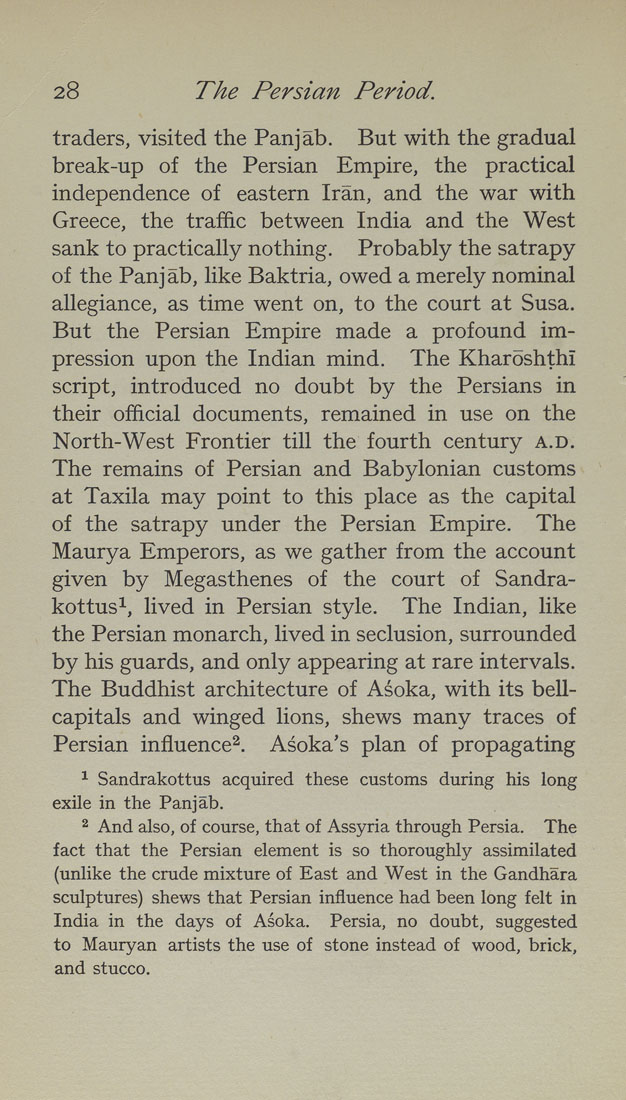28 The Persian Period.
traders, visited the Panjab. But with the gradual
break-up of the Persian Empire, the practical
independence of eastern Iran, and the war with
Greece, the traffic between India and the West
sank to practically nothing. Probably the satrapy
of the Panjab, like Baktria, owed a merely nominal
allegiance, as time went on, to the court at Susa.
But the Persian Empire made a profound im¬
pression upon the Indian mind. The Kharoshthi
script, introduced no doubt by the Persians in
their official documents, remained in use on the
North-West Frontier till the fourth century a.d.
The remains of Persian and Babylonian customs
at Taxila may point to this place as the capital
of the satrapy under the Persian Empire. The
Maurya Emperors, as we gather from the account
given by Megasthenes of the court of Sandra-
kottus^, lived in Persian style. The Indian, like
the Persian monarch, lived in seclusion, surrounded
by his guards, and only appearing at rare intervals.
The Buddhist architecture of Asoka, with its bell-
capitals and winged lions, shews many traces of
Persian influence^. Asoka's plan of propagating
^ Sandrakottus acquired these customs during his long
exile in the Panjab.
2 And also, of course, that of Assyria through Persia, The
fact that the Persian element is so thoroughly assimilated
(unlike the crude mixture of East and West in the Gandhara
sculptures) shews that Persian influence had been long felt in
India in the days of Asoka, Persia, no doubt, suggested
to Mauryan artists the use of stone instead of wood, brick,
and stucco.
|








